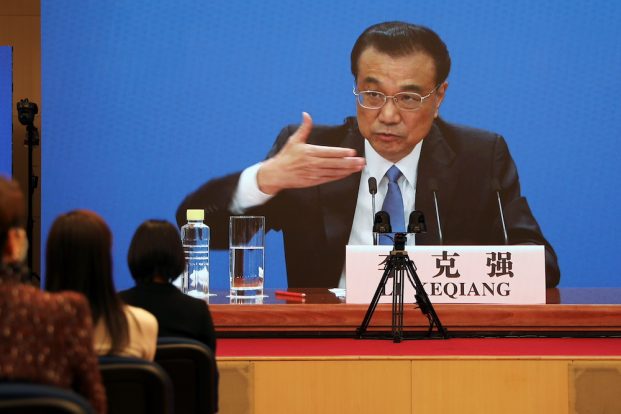China’s central bank said on Monday it would cut the amount of cash that banks must hold as reserves, its second such move this year, releasing 1.2 trillion yuan ($188 billion) in long-term liquidity to bolster slowing economic growth amid persistent Covid-19 cases.
The People’s Bank of China (PBOC) said on its website it would cut the reserve requirement ratio (RRR) for banks by 50 basis points (bps), effective from December 15.
The cut will not apply to financial institutions with an existing RRR of 5%, it said, adding that the weighted average RRR for financial institutions will be at 8.4% after the new reduction.
Currently, the RRR for large banks, after taking into consideration the preferential policy of targeted cuts for inclusive financing, is at 10.5%.
Some of the funds released will be used to repay matured medium-term lending facility loans, according to the PBOC.
The cut, the second this year following a broad-based reduction in July, was flagged by Premier Li Keqiang on Friday as a way to step up support for the economy, especially small firms.
Julian Evans-Pritchard, senior China economist with Capital Economics, said reserve ratio adjustments were not straightforward as their impact on monetary conditions has become less clear-cut over the past decade.
“But the RRR now often serves a more narrow purpose as a way to direct lending to certain sectors or simply as a liquidity management tool, resulting in little lasting shift in overall monetary conditions.”
‘Mixed Signals’
He said the government was “giving mixed signals about its intentions” – the statement accompanying the announcement said China’s “monetary policy stance has not changed” and explained that some of the funds injected by the RRR cut would be used to offset liquidity withdrawals from maturing MLF injections. But a stated motivation for the cut was to lower financing costs and support the real economy and small firms.
“Our assessment is that the PBOC is trying to nudge banks to lower lending rates to help struggling firms but doesn’t want to engineer a sharp pick-up in the quantity of lending – the announcement reiterates the goal of keeping credit growth broadly in line with nominal GDP growth.
“As economic activity continues to weaken and the PBOC becomes more serious about lowering corporate financing costs we expect further action, including policy rate cuts.”
Focus on Property Sector
The world’s second-largest economy, which staged an impressive rebound from last year’s pandemic slump, has lost momentum in recent months as it grapples with a slowing manufacturing sector, debt problems in the property market and persistent Covid-19 outbreaks.
China’s Politburo, a top-decision making body of the ruling Communist Party, said on Monday that it would keep economic operations within reasonable range in 2022, and will promote healthy development of the property sector, the official Xinhua news agency said.
“The key question on investors’ mind is whether the government is willing to change the policy stance in the property sector, how much will be changed, and whether a change of stance can really help to turn the sector around,” Chief economist at Pinpoint Asset Management Zhiwei Zhang said.
China’s move to wean property developers away from rampant borrowing has translated into loan losses for banks and pain in credit markets. It has also worsened a liquidity crisis at developer China Evergrande and other real-estate firms.
The authorities said on Friday they would step in and oversee risk management at the company.
Authorities have recently made financing tweaks to help home buyers and widened fund-raising channels for some developers.
• Reuters with additional editing by Jim Pollard
This story was updated on December 6.
ALSO SEE:
China’s Higher ‘Pain Threshold’ Sees Q4 Growth at 3%
China Growth Slumps to One-Year Low on Power, Property Drags
Northeast China On High Alert Amid Covid Crackdown
























